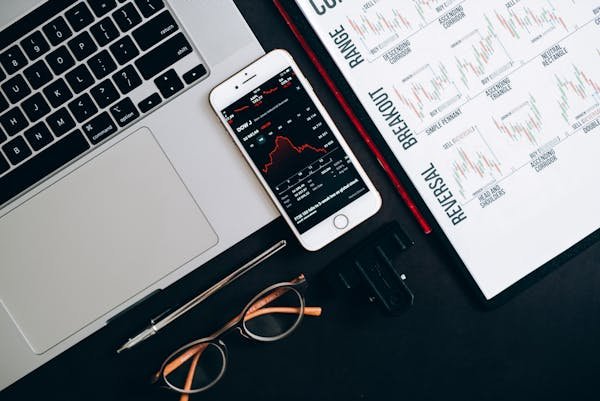There’s a quiet war going on in growth strategy rooms. On one side, the sales-led champions: teams that lean heavily on reps, relationships, and long sales cycles. On the other side, the product-led operators: folks who let their product speak first and convert users through value, not persuasion.
1. Product-led companies have 30% shorter sales cycles than sales-led counterparts
Why speed matters
Every day your sales cycle drags on, your business burns cash. Your team spends more time on calls, more effort on follow-ups, and more energy convincing instead of closing. A 30% shorter sales cycle isn’t just about time—it’s about efficiency, cash flow, and momentum.
Product-led companies win here because they don’t make users wait. No gatekeeping. No “book a demo to see pricing.” Just immediate value. A potential customer lands on your website, tries the product, and begins forming an opinion within minutes. That early exposure means faster decisions.
Sales-led models, in contrast, often rely on scheduling, qualifying, and guiding leads through multiple steps before they even touch the product. That adds days—or even weeks—to the process.
How this plays out in real deals
Think about it: a user signs up for a product like Slack or Notion. They’re already using it within minutes. That experience builds confidence. It reduces the need for negotiation. The product does the selling. The user is in control.
Now flip it. A sales-led company might make that same user go through a discovery call, wait for a follow-up, and only then offer access. By the time they’re inside, the spark might be gone.
This isn’t just about impatience. It’s about buyer behavior. People today expect speed. Amazon ships in a day. Movies stream instantly. If your product takes too long to deliver its pitch, you lose momentum—and possibly the deal.
How to speed up your cycle
Whether you’re product-led or not, there are ways to cut your sales cycle:
- Offer a free trial or freemium tier with core features available upfront
- Reduce the number of human checkpoints before product access
- Create self-serve demos or interactive tours to simulate value
- Use onboarding flows that show immediate results instead of setup steps
Sales-led companies can still learn from PLG by integrating product experiences earlier in the journey. Give your reps tools to let users test features instead of just talking about them.
Shorter cycles mean more throughput, less fatigue on your team, and more chances to learn from live customers. That compounds over time and gives you a real edge.
2. Sales-led GTM models show a 25% higher CAC on average compared to product-led
The cost behind every deal
Customer acquisition cost (CAC) is one of the most important numbers in your business. It tells you how much you spend to win a new customer. In a sales-led motion, CAC tends to balloon. Why? Because it’s people-intensive. You need skilled reps, long sales processes, events, outbound tools, and expensive software to manage it all.
Product-led growth flips that. Users try the product, get value, and convert—with minimal human touch. That keeps costs down.
A 25% difference in CAC might not sound dramatic at first glance. But zoom out. If you spend $1,000 to acquire a customer in a sales-led model, a product-led model might bring in that same customer for $750. Multiply that across hundreds or thousands of customers, and the savings stack up.
Why lower CAC drives long-term success
Lower CAC doesn’t just protect margins—it makes experimentation easier. You can try more channels, test new ideas, and enter new markets without burning cash. You also unlock pricing flexibility. If your acquisition costs are low, you can compete on price or offer longer trials without hurting your bottom line.
High CAC, on the other hand, traps you. You need high LTVs to justify the spend. That puts pressure on retention, upsell, and expansion. If any of those break, you’re underwater.
How to bring your CAC down
Even if you rely on sales, you can borrow from product-led tactics:
- Automate onboarding with guided walkthroughs
- Build educational content that helps users sell themselves internally
- Use product analytics to qualify leads before they reach a human
- Make pricing transparent to avoid wasting time on mismatched leads
Also, train your sales team to embrace product signals. If someone has used the product for 10 days and invited 5 teammates, they’re warmer than someone who just downloaded a whitepaper. Let usage data guide outreach, not just lead scores.
Reducing CAC doesn’t mean eliminating your sales team. It means making every dollar work harder.
3. Product-led companies report 2.2x higher net revenue retention rates
Why retention is the real growth engine
Net Revenue Retention (NRR) is your silent superstar metric. It tells you how much recurring revenue you keep—and grow—from your current customers. It accounts for churn, downgrades, and expansion. When NRR is high, it means users stay, upgrade, and deepen their use over time.
Product-led businesses excel here because the product becomes part of the customer’s daily life. When users discover value on their own, they don’t need to be convinced to stay. They want to stay.
With a great product experience, upgrades feel natural. Expansions are driven by usage, not just account managers. That leads to stronger NRR.
What happens when NRR is high
If your NRR is 120%, you can grow even if new sales stall. Your existing customer base fuels expansion. That’s powerful. It lowers your dependence on paid acquisition. It also makes your business more predictable.
Investors love this number. High NRR means strong retention and happy users—two signs of long-term sustainability.
How to boost NRR with product thinking
You don’t have to be 100% product-led to lift your NRR. You just need to use your product as a tool for growth:
- Identify which features drive retention and make them easy to find
- Use in-app nudges to guide users toward deeper value
- Track who’s engaging and follow up with helpful prompts—not sales pitches
- Create success loops: the more they use it, the better the results, the higher the chance they’ll stay
Also, involve your product team in retention goals. Customer success shouldn’t be a post-sale department—it should be part of product development. Make sure every release is aligned with solving real customer pain.
The more embedded your product becomes in a user’s workflow, the more defensible your revenue becomes.
4. 86% of buyers prefer a self-service model before talking to sales
The shift in buyer behavior
Today’s buyer is different. They do research on their own. They explore alternatives. They compare features, read reviews, and even test products—all before talking to a human. This is not just a trend; it’s a complete shift in how people make decisions. When 86% of buyers say they want self-service before sales, it’s time to listen.
Product-led companies have recognized this shift. They remove friction. They allow users to start without blockers. There are no demo gates, no endless forms. Just product access, often in minutes.
Sales-led organizations that ignore this behavior create friction. They force buyers to speak to someone before they’re ready. That feels like pressure—and pressure drives people away.
What this means for trust
Letting users explore on their own builds trust. It shows confidence. It signals that you believe your product can prove its own worth. People appreciate that. They feel in control. And when they do talk to sales, the conversation is better. It’s not about “What do you do?” It’s about “How can I get the most out of this?”
That kind of conversation closes faster. And it often closes bigger.
What you should change
You don’t have to tear down your entire sales process. But you do need to think carefully about how people get started.
- Can someone sign up and try the product without talking to you?
- Can they see pricing?
- Can they invite teammates?
- Can they experience a real outcome—however small—within 15 minutes?
If the answer is no, you’re losing a big part of the market. Buyers want self-service not because they dislike sales, but because they want to feel the value before making a decision. Meet them where they are. Let the product lead. Then bring sales in as a guide—not a gatekeeper.
5. PLG companies scale ARR 3x faster post-Series A than sales-led firms
Speed after funding matters
Once a company raises its Series A, everything speeds up. Expectations grow. Investors want to see traction, momentum, and signals of product-market fit. In this stage, companies need a go-to-market engine that can scale with minimal friction.
Product-led companies shine here. Because the product is already doing the work, all they need to do is widen the top of the funnel. Add more users. Let more people experience the value. That’s easier than hiring and training dozens of sales reps.
In a product-led model, growth compounds. One happy user invites another. One team grows into an entire company account. The numbers start stacking quickly—and the product scales faster than humans ever could.
Sales-led slows scaling
Sales-led firms often run into hiring bottlenecks. They need more people to generate more revenue. That takes time and money. Each rep has a ramp-up period. Not every hire performs. The model becomes harder to scale quickly.
Also, sales-led motions depend on predictability. You need clear territories, clear comp plans, and clear sales stages. If any part breaks, so does growth.
Product-led companies bypass a lot of this. They focus on product usage, not headcount.
How to build for post-Series A scale
Even if you’re not fully product-led, you can set yourself up for this kind of growth. Here’s how:
- Build growth loops into your product: Invite, share, collaborate
- Track activation closely: Know when a user “gets it”
- Turn product usage into qualified leads: Let sales focus on warm users
- Use data to find expansion opportunities inside existing accounts
Growth after Series A is about leverage. If your only lever is more sales reps, you’ll hit a ceiling. But if your product converts on its own, every new signup is a chance for revenue.
6. Sales-led orgs allocate 40–60% of revenue to sales and marketing
The hidden cost of sales-heavy growth
When nearly half—or more—of your revenue goes toward sales and marketing, you’re under pressure. That’s money you could spend on product, customer support, or infrastructure. But instead, it goes to closing new deals. If every dollar you earn depends on another dollar spent, growth becomes expensive.
Sales-led organizations are built this way. They invest heavily in outbound, events, paid ads, and SDR teams. This works—but it’s costly. Every new customer needs touchpoints, human guidance, and hand-holding.
Product-led companies are different. They spend more on product and less on persuasion. They build experiences that help users convert on their own. That saves money—and boosts margins.
What this means as you scale
High sales and marketing spend works when deals are big and long-term. But if you’re chasing smaller accounts or operating in competitive markets, it hurts. Your margin shrinks. You need perfect execution just to break even.
PLG companies, on the other hand, enjoy more flexibility. They can grow with fewer people. They can reinvest in product. That builds a better experience, which attracts more users. And the loop continues.
How to rebalance your budget
If you’re spending too much on sales and marketing, ask these questions:
- Can the product handle more of the qualification process?
- Are we using in-product education instead of email sequences?
- Can we drive upsells without a dedicated account manager?
You don’t need to go full PLG overnight. But even small shifts—like using onboarding tools or showing pricing—can take pressure off your sales team.
Over time, the best companies learn to blend product-led and sales-led motions. They use people where they’re most valuable—and let the product do the rest.
7. Product-led firms see 10–20% freemium-to-paid conversion on average
The freemium model isn’t about giving everything away
Many companies fear freemium. They think it means giving away too much. But the truth is, freemium done right drives serious conversions. Product-led companies that use this model see 10–20% of users converting from free to paid plans. That’s not a small number. That’s scalable growth at low cost.
Why does this work so well? Because users experience value first. They aren’t buying blind. They try the product, see it in action, and decide when they’re ready to upgrade. It feels natural—no pressure, no pitch.
Sales-led models ask for trust before value. Freemium flips that: it gives value, builds trust, and lets the user decide.
Why freemium users convert
Freemium users convert because of momentum. Once they’re using your product in their workflow, switching becomes costly. They start with basic tasks, then hit limits. Maybe they want to invite more people. Or need a specific feature. Or want to remove branding.
At that point, the upgrade makes sense. It doesn’t feel like a sale—it feels like unlocking more power.
This kind of conversion is efficient. It happens inside the product. There’s no need for cold calls or demo decks. The product does the work.
How to make freemium work for you
Freemium is only effective if you design it well. Too much value, and users stay free forever. Too little, and they leave before they see the benefits. Here’s how to strike the right balance:
- Choose a clear upgrade trigger. Make it usage-based (like number of users or projects), not just time-based.
- Show the value of paid features before the user hits the paywall. Tease, don’t hide.
- Use in-app prompts to highlight what they’re missing. Remind, don’t nag.
- Give users a path to success during the free phase. If they get real results, they’re more likely to upgrade.
If you’re in a competitive space, freemium might be the edge that brings in users. From there, your product just needs to help them grow into paying customers.
8. Only 27% of B2B buyers engage with sales during discovery
The discovery process is now digital
Think back to the last time you bought software. Did you start by contacting sales? Or did you browse the site, read reviews, maybe even test the product first?
You’re not alone. Only 27% of B2B buyers engage with sales during their discovery phase. That means nearly three out of four buyers are doing research silently. They’re reading documentation, watching tutorials, comparing pricing. All without raising a hand.
If your GTM strategy assumes you’ll guide every buyer from the beginning, you’re already behind. You need a self-serve experience that speaks for you when you’re not in the room.
What this means for content and product
Your product and website are now part of the sales team. Every page matters. Every click is a chance to convince—or confuse.
Product-led companies invest heavily in this early experience. They make sure users can get answers without help. They use content, UI, and onboarding to show value.
Sales-led firms often miss this. They rely on sales reps to fill in the blanks. But if the buyer never reaches out, that opportunity is lost.
How to meet silent buyers where they are
To win with modern buyers, you need to speak before they speak. That means:
- Clear documentation that’s easy to find and understand
- Product tours or sandbox environments that show real use cases
- Transparent pricing that helps users self-qualify
- Thoughtful onboarding flows that guide users before sales gets involved
Also, track what users do before they ever talk to sales. Are they reading help docs? Starting free trials? Inviting teammates? These signals tell you when a silent buyer is becoming ready to engage.
You don’t need to chase every lead. Just be ready when they’re ready. That’s what modern discovery looks like.
9. 70% of SaaS unicorns in 2024 use a product-led GTM strategy
The new normal for breakout growth
This stat isn’t just a trend—it’s a signal of what works at scale. Seventy percent of SaaS unicorns in 2024 are using a product-led go-to-market model. These are companies valued at over a billion dollars. They’ve grown fast, retained users, and unlocked huge markets. And they did it by letting the product lead.
Why does this matter? Because it proves that product-led growth isn’t just for small startups. It works for big companies, too. In fact, it may work better as you scale.
When your product sells itself, every user becomes a potential ambassador. Every interaction becomes a chance to expand. And every upgrade becomes a moment of growth.
What unicorns figured out
Unicorns don’t get lucky. They build systems that work. In PLG, that system often includes:
- A frictionless signup flow that gets users into the product fast
- A clear value path that shows ROI within minutes
- Usage-based pricing that scales with customer success
- Data-driven sales teams that only engage with high-intent users
These elements compound. As more users try the product, more discover value. That leads to more revenue, more feedback, and more improvements. It’s a flywheel that gets stronger over time.
How to think like a unicorn
You don’t need to be a billion-dollar company to use their tactics. You just need to act like one. Here’s how to start:
- Identify your “aha” moment. What’s the first thing a user does that signals success?
- Build everything around getting them to that moment faster.
- Remove friction. If something delays value, fix it.
- Use product analytics to guide growth. Guessing won’t cut it.
And perhaps most importantly, stay obsessed with the product experience. That’s what your users care about. That’s what makes them stay. And that’s what ultimately drives unicorn-level growth.
10. Sales-led models show 35% lower trial-to-paid conversion rates than PLG
Where conversion drops in sales-led funnels
Sales-led growth strategies often require potential customers to jump through multiple hoops before they can see value. First, a discovery call. Then a demo. After that, a proposal. Somewhere far down the line, maybe, comes actual product use. This slows down excitement—and kills momentum.
Now compare this to a product-led growth (PLG) model. The user signs up, tries the product, sees value immediately, and upgrades when they feel ready. The result? PLG companies convert trials to paid users at significantly higher rates—on average, 35% better than sales-led models.
It’s not just about access. It’s about experience. When a user is in control, they feel empowered. When they’re stuck waiting for sales to reach out, the moment might pass.
What’s behind the lower conversion
The big problem with trial-to-paid conversion in sales-led models is delay. If it takes too long to get a real feel for the product, people disengage. If you need help just to get started, the bar feels high. Buyers today expect instant insight. They want the product to answer: “Can this solve my problem right now?”
When the product can’t be tested easily, that answer gets delayed or even lost. That’s why conversion suffers.
What to do differently
If your trial conversions are low and you rely on a sales-led model, it’s time to rethink how users experience your product. Start here:
- Let users sign up and start using the product before scheduling a call
- Shorten the time to value—your onboarding should lead them directly to a small win
- Use in-product nudges to highlight key features that lead to conversions
- Don’t hide your best features—let users try them, even in limited ways
Also, let sales and product work together. Use trial usage data to inform outreach. If someone invited teammates or completed a core action, that’s your moment to reach out—not at random.
Conversion is a sign of momentum. Keep that momentum inside the product, and you’ll close more without pushing harder.
11. Product-qualified leads convert 5x higher than marketing-qualified leads
Not all leads are created equal
Traditional marketing-qualified leads (MQLs) are based on surface-level actions. They downloaded a whitepaper. They attended a webinar. Maybe they visited the pricing page. But do any of those things really prove intent?
Product-qualified leads (PQLs) do. They’ve used the product. They’ve engaged with real features. They’ve hit milestones that suggest they’re getting value. These are the leads you want. And it shows—PQLs convert to paid customers at five times the rate of MQLs.
That’s a massive difference. It changes everything about how you prioritize leads, build funnels, and train your sales team.
Why PQLs are more reliable
PQLs are based on behavior, not just interest. If someone completes an important action in your product—like sending their first invoice, or inviting a teammate—it’s a signal they’re invested. They’re not browsing. They’re building. That’s the perfect time for a conversion.
In contrast, an MQL might still be in research mode. They might not even have budget approval. Their timeline could be months away. That’s why MQLs require more effort and convert at lower rates.
How to generate and use PQLs
If you want higher conversion and better alignment between marketing and sales, you need to identify and act on PQLs. Start by defining what success looks like inside your product. What’s the first meaningful action users take before they buy?
Once you know that, track it. Set up alerts or dashboards. Then, use that data to guide outreach.
- Sales teams should prioritize users who’ve hit those milestones
- Emails should be tailored to what they’ve already done in the product
- Follow-ups should focus on helping them deepen usage—not starting from scratch
Also, don’t be afraid to qualify users out. If someone isn’t using the product, maybe they’re not ready. Focus your energy where it matters most.
PQLs don’t just convert better—they shorten your sales cycle, improve close rates, and make your team more efficient. That’s a win from every angle.
12. Sales-led models require 2.5x more human touchpoints to close deals
The cost of human-heavy sales
In sales-led models, relationships drive results. That sounds good—until it slows you down. When every deal requires multiple emails, follow-up calls, demos, contract reviews, and stakeholder meetings, your process gets heavy. That’s the reality behind this stat: sales-led companies need 2.5 times more human touchpoints to close each deal compared to PLG businesses.
Every interaction adds time. It also adds cost. The more effort you spend guiding a lead, the fewer leads you can manage at once. That means hiring more people to grow—which hurts your margins.
Why PLG shortens the journey
Product-led companies reduce the need for human involvement. A user signs up, explores the product, gets value, and decides to pay. There’s no need to “convince” them—they’re already convinced by their own experience.
Of course, some PLG businesses still use sales teams. But those teams step in later, when the user is engaged. The conversation is focused, not introductory. It’s about deepening use, expanding accounts, or supporting enterprise needs—not explaining what the product does.
What to change if you need too many touchpoints
Too many touchpoints slow things down and create friction. If your team is drowning in follow-ups, it’s time to let the product take on more of the load.
Here’s where to start:
- Add in-product tours and contextual help so users don’t need to ask
- Build a self-serve knowledge base with answers to common objections
- Let users test advanced features on their own before involving sales
- Automate some of your nurture sequences based on product behavior
Also, segment your leads. Some users do need more guidance. But many just want to explore. Let your sales team focus on high-value prospects, and let the product close the rest.
Reducing human touchpoints doesn’t mean removing the human touch. It means using it wisely—where it drives the most value.
13. PLG companies have a 50% lower churn rate in SMB segments
Why retention is make-or-break for SMBs
When you’re serving small and medium-sized businesses (SMBs), churn is always a threat. Budgets are tighter. Switching costs are lower. Priorities shift fast. If your product doesn’t deliver immediate, ongoing value, users will leave.
This is where product-led growth shines. PLG companies often have churn rates 50% lower than their sales-led counterparts in SMB segments. That’s a huge difference. It means more stable revenue, more word-of-mouth growth, and less pressure to constantly acquire new customers.
The reason is simple: PLG products are built to be used, not just sold. When users onboard themselves, see value early, and can use the product without needing a rep, they’re more likely to stick around.
How PLG creates stickiness
Churn doesn’t just happen at the end of a subscription. It starts early—when a user doesn’t find the value they were promised, or feels lost during onboarding. PLG products address this from the start.
They focus on activation: getting users to meaningful value as quickly as possible. They use product nudges, guided experiences, and self-service support. All these things reduce the risk of early drop-off.

They also promote continuous use. The product becomes part of the workflow, not just a tool someone logs into occasionally. That regular engagement builds habit—and habits are hard to break.
What you can do to reduce SMB churn
Even if you’re not fully product-led, there are ways to adopt PLG principles and keep your SMB users around longer:
- Identify your product’s activation point and optimize your onboarding flow to get users there quickly
- Use in-app prompts to highlight underused features that can increase engagement
- Offer tiered pricing or usage-based models so users grow without financial friction
- Build an easy way to get help—live chat, tooltips, searchable guides
Churn is expensive. But more importantly, it’s a signal. If users are leaving, they’re telling you something about your product experience. Listen. Fix it at the product level—and retention will follow.
14. 75% of users decide to upgrade based on in-product experience
The real moment of conversion happens inside the app
Marketing might bring users in. Sales might follow up. But for most product-led businesses, the upgrade decision happens inside the product. Seventy-five percent of users say their decision to pay is based on their in-product experience.
This makes sense. No blog post or sales pitch can replace hands-on value. When users feel the benefit of your product firsthand—when it solves a problem quickly, smoothly, and repeatedly—they want more. That’s when they decide to upgrade.
What defines a great in-product experience
A great experience doesn’t just mean a clean interface or fast performance. It’s about how the product feels during key moments. Does the onboarding answer questions before they arise? Does the user see progress quickly? Are the limits of the free plan clear—but fair?
PLG companies design every step of the user journey to encourage exploration and delight. They track where users drop off and smooth those edges. They add tooltips where confusion might occur. They highlight features when users are ready—not too early, not too late.
It’s a constant process of iteration, not a one-time launch.
What you should focus on
To improve your in-product experience and drive more upgrades, start with these key areas:
- Map your product journey: where do most users go first? Where do they stop?
- Highlight quick wins: show how to solve one problem in the first session
- Make upgrade points obvious, but not annoying: use feature gates with context
- Track engagement and adjust based on what real users do—not what you think they do
Also, test everything. Tiny changes in wording, color, or timing can make a big difference. One small tweak to how you frame a limitation might double your upgrade rate.
Remember: the product is the pitch. The more it helps users succeed, the more likely they are to pay for more.
15. Product-led companies show 1.8x higher virality/referral coefficients
Growth that comes from the inside
When users love a product, they talk about it. They invite others. They bring teammates in. That’s virality. And it’s not just a buzzword. Product-led companies show referral rates nearly twice as high as sales-led ones.
This kind of growth is powerful because it costs nothing. It builds trust. And it scales. A user who brings in three others is worth more than just their subscription—they become a growth channel.
Virality isn’t about gimmicks. It’s about value. When users share your product, it’s because they found something useful—and they think others will too.
How product design drives virality
PLG companies engineer their products to encourage sharing. It’s not accidental. It’s built into the experience.
They offer collaboration features that naturally involve others. Think Google Docs or Figma—if you want to get full value, you invite someone else.
They also use moments of success to prompt referrals. When a user finishes a task or hits a goal, that’s a perfect time to say, “Want to share this with your team?”
Most importantly, they make it easy. No complicated signup flows. No lengthy explanations. Just a simple, friction-free way to bring others in.
How to build virality into your product
You don’t need to be a social network to go viral. You just need to create moments worth sharing—and give users the tools to do it. Here’s how:
- Identify moments of value and add low-effort sharing prompts
- Make collaboration part of the workflow, not an afterthought
- Offer small rewards for referrals (extra storage, new features, etc.)
- Track who refers whom, and follow up with thank-you nudges
Also, use referral data to shape product decisions. If certain actions lead to more invites, optimize them. If certain users refer more than others, study what makes them different.
Virality is a sign that your product creates real value. When users promote you without being asked, that’s the highest form of product-market fit.
16. Sales-led GTM sees a 42% longer onboarding time on average
Why onboarding delays hurt growth
Onboarding is one of the most important phases in a user’s journey. It’s the point where they decide whether to keep going—or walk away. If this experience is slow, clunky, or unclear, users drop off.
Sales-led companies often struggle here. Because their process involves back-and-forth with sales, onboarding timelines drag out. Waiting for a rep to respond. Scheduling calls. Reviewing contracts. Each step adds time. On average, onboarding takes 42% longer in sales-led motions compared to product-led ones.
That delay hurts conversion, increases churn risk, and slows down revenue. In a world where users expect instant value, slow onboarding is no longer acceptable.
What slows onboarding in sales-led models
Much of the delay comes from relying too much on people. Sales reps walk users through setup. Customer success teams manually answer basic questions. Contracts need to be reviewed. Pricing needs negotiation.
Each touchpoint adds time—and introduces potential for confusion.
Compare that to a product-led motion. The user signs up and gets into the product immediately. Tooltips, tours, and in-product help guide them toward the first win. It’s fast. It’s focused. And it happens on their terms.
How to fix slow onboarding
Even if you’re in a sales-led company, you can borrow from PLG tactics to speed things up. Here’s how:
- Create a no-touch or low-touch onboarding path for users who want to explore first
- Offer self-service resources: product tours, video tutorials, live chat
- Track where users get stuck, and fix those points—fast
- Let the product show value without needing full setup or payment
Also, rethink the role of sales during onboarding. Instead of hand-holding, make them advisors. Let them jump in only when users need strategic guidance, not basic support.

Speed matters. The faster a user sees value, the more likely they are to stick around—and the less expensive it is to keep them.
17. PLG businesses hit $10M ARR 40% faster than sales-led peers
Why time to $10M ARR matters
For startups, hitting $10 million in annual recurring revenue (ARR) is a big milestone. It proves product-market fit. It opens the door to new funding. It shows that growth is real—not just a lucky launch.
And for PLG companies, this milestone often comes faster. On average, they reach $10M ARR 40% sooner than sales-led firms. That kind of acceleration gives them a huge advantage. They can reinvest in growth earlier, raise better rounds, and build stronger teams with more confidence.
What drives the speed in PLG models
Speed comes from leverage. In PLG, the product does most of the selling. That means more users can start using the product without waiting. Conversion happens faster. Upsell happens inside the product. The whole process scales without needing to add more salespeople.
This self-serve motion also widens the top of the funnel. Anyone can try the product. That means more experimentation, more feedback, and faster iteration.
Sales-led firms rely on reps to do this manually. That slows things down. It also introduces bottlenecks: hiring, training, managing pipelines. If growth depends on headcount, it gets expensive and risky.
How to speed up your own path to $10M ARR
Even if you don’t start as a PLG company, you can add elements that help you grow faster. Try this:
- Open up self-serve signup: remove friction and let people start using the product
- Make sure pricing and plans are visible and easy to understand
- Use your product as a lead qualification tool: only bring in sales when it makes sense
- Let usage drive expansion: add feature gates or usage-based tiers
Also, keep an eye on onboarding and activation. If users aren’t seeing value in the first session, that delay will slow everything else down.
Faster growth isn’t about working harder. It’s about making the product do more of the work.
18. 60% of enterprise buyers now expect a product-led entry point
PLG isn’t just for SMBs anymore
There used to be a belief that enterprise customers needed a heavy sales process. Lots of meetings. Custom demos. Procurement reviews. That’s changing.
Today, 60% of enterprise buyers expect a product-led entry point. That means they want to try the product first. They want to get a feel for how it works before committing to a sales process. They want self-serve, even at a large scale.
This is a huge shift. It means the principles of PLG aren’t just for startups or solo users. They apply at every level.
Why enterprise users want hands-on time
Enterprise users are still people. They use consumer-grade apps at home. They’re used to trying things before buying. And when they come to work, they expect the same.
If a decision-maker can’t explore your product before a meeting, that creates doubt. They worry about complexity. They wonder about fit. That slows down the sale—or kills it completely.
PLG gives them confidence. A quick test shows them how it works. A good experience builds trust. By the time they talk to sales, they’re not asking “What is this?” They’re asking “How do we roll it out?”
How to serve enterprise buyers with PLG
You don’t have to give away everything to large customers. But you do need to create a thoughtful path that lets them explore. Here’s what helps:
- Offer a sandbox version or enterprise trial that mimics their use case
- Let decision-makers invite team members and simulate real workflows
- Use product usage data to guide sales conversations and demos
- Show them how others like them use the product—real examples, not generic decks
Also, keep your trial experience clean and focused. Enterprise buyers are busy. They need to see results quickly. If they do, they’ll keep moving forward.
PLG isn’t about removing sales—it’s about delaying it until the buyer is ready. And when they are, the deal moves faster and closes stronger.
19. Self-serve channels account for 70% of revenue in mature PLG firms
Where revenue really comes from
In mature product-led companies, self-serve channels do the heavy lifting. Seventy percent of revenue often comes from users who sign up, try the product, and convert—all without ever speaking to a human. That’s an incredible number.
It means growth isn’t limited by how many sales calls you can make. It means you don’t need an army of reps to grow. Instead, your product becomes the engine—running 24/7, converting users while you sleep.
Self-serve doesn’t mean zero support. It means support is built into the product. Answers come through tooltips, videos, or AI chat. Guidance happens automatically. When users are ready to upgrade, the process is smooth and simple.
Why this matters for your margins
When self-serve drives most of your revenue, your cost per customer drops. Your support load lightens. Your sales cycle shortens. All of that improves your gross margins and makes your business more efficient.
It also makes growth more predictable. Instead of relying on a few big deals, you get steady revenue from a broad base of users. That diversification makes your company more resilient.

Sales-led models struggle here. Revenue depends on negotiations, contracts, and timelines. Deals get stuck. Pipelines become fragile. But in PLG, the product keeps going—even when the team is offline.
How to build a high-performing self-serve motion
If you want more revenue from self-serve channels, start by focusing on two things: ease of entry and clarity of value.
- Remove barriers to signup. No credit card. No long forms. Just let them try.
- Show value quickly. Don’t overwhelm users. Guide them to one success. Then build from there.
- Make it easy to upgrade. Clear pricing. Simple options. Let users choose the plan that fits them.
- Track behavior. Know which users are close to converting—and gently nudge them
You don’t need to shut down your sales team. But if your product can close even 50% of your revenue on its own, your whole business becomes faster, leaner, and more scalable.
20. PLG companies average 4.5x more product usage data per user
Why data is your growth map
In product-led growth, the product is not just a tool—it’s a sensor. Every click, scroll, and feature used tells a story. PLG companies, on average, collect 4.5 times more usage data per user than sales-led firms. That’s a massive advantage.
Why? Because data is direction. It shows what’s working, what’s not, and where users are finding value. It tells you when someone is about to upgrade—or about to churn. It helps you improve the product faster and smarter.
Sales-led teams often miss this. They rely on CRM notes and call transcripts. That’s helpful—but it’s limited, subjective, and late. Product data is real-time and behavior-based. It’s what users actually do, not what they say.
How usage data drives better decisions
Let’s say you launch a new feature. If you’re PLG, you can instantly see how many users tried it, how long they used it, and where they dropped off. If adoption is low, you tweak onboarding or change the UI.
Or let’s say you’re planning outreach. Instead of guessing which leads are warm, you look at product signals. Did they invite teammates? Complete a key workflow? That’s your moment.
This kind of precision leads to better product decisions, better sales timing, and better support responses. It’s like flying with instruments instead of your gut.
How to start tracking and using product data
If you’re not collecting rich product data yet, here’s how to begin:
- Use product analytics tools like Mixpanel, Heap, or Amplitude
- Define key actions—activation points, upgrade triggers, churn risks
- Build dashboards that track usage across user segments
- Feed usage data to your sales and support teams so they know who to prioritize
And most importantly, make it a habit. Product data shouldn’t be a monthly report. It should be part of every decision, every meeting, every experiment.
With the right data, you’ll know what users want—before they tell you. That’s how PLG companies stay ahead.
21. Sales-led firms report 30% more friction in cross-sell efforts
Why expanding existing accounts is harder with sales
Selling to a new customer is tough. But selling more to an existing one should be easier—right? Not always. Sales-led companies report 30% more friction in cross-sell efforts than product-led firms.
That’s a big problem. Because expansion revenue is often the most profitable kind. No acquisition cost. Warm relationship. Known need. But in sales-led models, cross-sell still depends on calls, pitches, and persuasion. That slows things down—and creates resistance.
Users don’t want another pitch. They want to unlock more value. In PLG, that’s exactly what happens. Expansion happens naturally, inside the product. No call needed.
Why PLG wins at cross-sell
PLG products are designed for modular growth. A user starts small, then discovers more. They hit a limit and upgrade. They invite a team, and the plan scales. Every interaction becomes a chance to expand—without needing human involvement.
The key is timing. In-product prompts show up when users are ready. Not before. Not after. Just when it makes sense.
That means upgrades feel helpful—not like upsells. And because they’re self-initiated, they convert more and churn less.
How to remove cross-sell friction
If your team struggles with expansion, try shifting more of the work to the product. Here’s how:
- Use product milestones as triggers: when users hit a usage threshold, show the next step
- Offer contextual upgrades: don’t sell a new feature until the user is ready for it
- Track which accounts are underutilizing features—and send educational prompts
- Let users trial premium features for a limited time with no sales intervention
Also, align your success and product teams. Everyone should be working to help users grow naturally—not push upgrades too early.
Cross-sell should feel like progress. In PLG, that’s exactly what it becomes.
22. 84% of users say a poor product experience blocks conversions
It’s not always price—it’s often experience
Most people assume users don’t convert because of price. But that’s not the full picture. In reality, 84% of users say the main reason they didn’t convert was a poor product experience. That’s a powerful insight.
If your product is hard to use, slow to load, or confusing to navigate, no amount of marketing or sales can save it. A frustrating first impression turns people away—even if the value is there. They won’t stick around long enough to find it.
In a product-led world, the product is the pitch. And if the pitch fails, the conversion never happens.
What makes an experience poor
It doesn’t have to be catastrophic. Sometimes it’s a small glitch. A missing tooltip. A button that doesn’t do what’s expected. A confusing menu. These little things add up—and they silently kill momentum.
Users don’t always complain. They don’t always send feedback. They just leave. And you never hear from them again.
That’s why companies that prioritize product experience win. They obsess over the details. They track where users drop off. They refine onboarding flows. They study where confusion happens—and fix it.
How to improve product experience to drive conversions
If you want better conversions, focus less on features and more on how those features are experienced. Start with this:
- Map out the user journey from signup to first success
- Identify friction points: where do users hesitate, stop, or leave?
- Add just-in-time guidance: use tooltips, walkthroughs, and checklists
- Reduce cognitive load: simplify design, remove unnecessary choices
- Test with real users: watch them interact and note confusion
Most importantly, measure what matters. Don’t just track logins or page views. Track success metrics—did they complete a task? Invite a teammate? Save time?
When the experience is smooth, intuitive, and helpful, conversions go up—without needing a bigger sales team or bigger ad budget.
23. PLG orgs achieve 1.6x higher gross margins
Why margins matter more than revenue
Revenue is exciting. It’s what people celebrate. But gross margin is what keeps your business alive. It shows how much money you actually keep after delivering your product. And in PLG companies, gross margins are 1.6x higher than in sales-led organizations.
That’s a big deal.
Why? Because PLG businesses use fewer people to close more deals. They let the product do the work. That means fewer commissions, fewer onboarding calls, fewer support tickets. The result? Higher margins.

Higher margins give you more room to invest—in product, in marketing, in hiring. They also make your business more attractive to investors, acquirers, and potential partners.
How PLG keeps margins healthy
PLG organizations scale without scaling headcount in the same proportion. That’s the magic. When one support rep can manage 1,000 users because most questions are answered inside the product, your cost to serve drops.
When upgrades and expansions happen automatically—based on usage, not persuasion—your sales costs drop.
When onboarding is self-guided and doesn’t require a 30-minute Zoom call, your customer success costs drop.
Every part of the business becomes leaner. Not because you cut corners—but because the product pulls its weight.
How to improve margins even in a sales-led setup
If you’re not fully product-led, you can still improve your margins. Look for areas where your team is doing things the product could handle:
- Can onboarding be automated or simplified?
- Are your reps spending time answering basic questions that a help center could cover?
- Can your pricing model better reflect usage, making it more efficient to deliver value?
Also, track cost per customer segment. You might find that some users require lots of support and pay very little. That’s a red flag. Either improve their experience or rethink the fit.
Higher margins don’t just happen. They’re designed—through smart product choices, operational efficiency, and user-focused thinking.
24. Time-to-value is 45% faster in product-led onboarding flows
First impressions decide everything
When users sign up for a new product, they’re impatient. They want results. They want to feel like it was worth their time. If it takes too long to get there, they lose interest.
That’s why product-led onboarding flows are so effective. They get users to value 45% faster than sales-led models. That’s not just speed—it’s impact. A fast time-to-value (TTV) keeps users engaged. It creates momentum. It sets up the conversion.
Sales-led onboarding often depends on meetings, walkthroughs, and checklists. That slows things down. Product-led onboarding, by contrast, is built right into the product. It’s interactive. It’s self-paced. And it’s designed to deliver a win fast.
What time-to-value actually means
TTV isn’t about how fast someone logs in. It’s about when they feel that this product helps me.
That could be when they publish their first newsletter. Or when they send their first invoice. Or when they visualize data for the first time.
The goal is to make that moment happen as early as possible. Everything else in the onboarding flow should be geared toward that one experience.
How to shorten time-to-value in your product
If you want more users to convert and stay, shorten their path to value. Start here:
- Define your product’s core value moment: what action shows success?
- Build a guided flow that leads directly to that moment
- Remove any unnecessary steps, clicks, or setup tasks
- Use defaults and templates to eliminate blank screens
- Show progress: let users feel like they’re getting somewhere fast
Also, track TTV for different segments. If enterprise users take longer, can you offer pre-configured environments? If small teams get stuck, can you simplify the start?
Speed matters. But speed to value matters more. The sooner users succeed, the more likely they are to convert, expand, and stick around.
25. 68% of B2B SaaS companies are shifting toward hybrid PLG+Sales GTM
The rise of the hybrid model
The debate isn’t just product-led versus sales-led anymore. More and more companies are realizing they don’t have to choose. In fact, 68% of B2B SaaS companies are now adopting a hybrid go-to-market (GTM) model that blends product-led growth with traditional sales.
This approach gives them the best of both worlds. Self-serve to attract and convert users quickly. Sales assistance to close larger deals, handle complex use cases, and support enterprise buyers.
Hybrid models are flexible. They adapt to different customer types and preferences. Some users want to explore solo. Others want a guided experience. With a hybrid strategy, you can serve both.
Why the shift is happening
The shift is driven by real behavior. Buyers want to try before they buy—but they also want support when stakes are high. A startup might self-serve from trial to paid. But a large enterprise might want assurances, security reviews, and onboarding help.
PLG gets you in the door. Sales helps you stay and expand.
Also, hybrid models improve efficiency. Sales teams spend their time on high-intent leads that already experienced value. That means fewer cold calls, better win rates, and shorter cycles.
How to execute a hybrid GTM strategy
You don’t need to fully redesign your company to go hybrid. Start by building clear pathways:
- A self-serve path: free trial, freemium, or instant signup
- A sales-assist path: triggered by usage, size, or team invites
- Smart handoffs: when a user reaches a certain threshold, bring in sales with context
- Tools and data: ensure your sales team sees product usage, not just marketing activity
Also, make sure sales and product teams are aligned. They should share goals, not compete. Your success comes from helping users win—whether they convert on their own or with a rep.
Hybrid is the future. It’s not a compromise—it’s a multiplier.
26. Sales-led deals close at a 21% lower win rate than product-led
Why product engagement beats persuasion
In a sales-led deal, success depends heavily on persuasion. A rep explains features, handles objections, and tries to win the customer over. In a product-led deal, success depends on engagement. The user already explored the product. They already saw value. They’re not being sold—they’re choosing.
That’s why product-led deals win more often. On average, sales-led deals close at a 21% lower win rate. That gap can make or break your pipeline, especially in tight markets.
It’s not because sales reps are bad. It’s because the product hasn’t earned the deal before the conversation starts.
The risk of cold deals
Sales-led teams often chase leads based on job title, company size, or email opens. But those signals don’t guarantee intent. Many of those prospects aren’t ready—or aren’t the right fit.
That leads to wasted time, missed quotas, and bloated pipelines.
PLG deals, in contrast, are warm. The user has already taken action. They’ve tried features, invited teammates, or hit usage limits. These are strong signals of intent. And when a sales rep steps in at this stage, the conversation is much more productive.
How to increase win rates using product signals
Even in a sales-led setup, you can improve your close rate by incorporating product-led tactics:
- Track and score product activity: logins, feature usage, team expansion
- Prioritize outreach based on in-app behavior, not just form fills
- Use usage data in conversations: “I noticed your team created five projects last week—what’s working well so far?”
- Follow up when value is fresh, not weeks later
The key is timing. The best time to close is when the product already made the case. Sales just seals the deal.

Win rate is a reflection of alignment. When the product and sales motion work together, your team closes more with less effort.
27. PLG-led upsells are 2x more likely to succeed
Why upsells work better when they feel natural
Upselling can be tricky. When done too aggressively, it feels pushy. When timed wrong, it feels confusing. But when it happens inside the product, at the right moment, it just makes sense.
That’s what product-led companies get right. Their upsells are twice as likely to succeed—not because they sell harder, but because they sell smarter. They offer more value right when the user needs it.
It’s not a conversation—it’s a button. It’s not a pitch—it’s a prompt. And that shift changes everything.
The secret: timing and context
PLG-led upsells work because they’re contextual. A user hits a usage limit. They want a feature that’s gated. They reach a milestone. At that point, they’re primed. They already believe in the product. They just need access to more of it.
That’s very different from a cold sales call asking someone to upgrade without proof of value.
Also, PLG upsells happen in the flow of work. The user doesn’t have to leave the product or wait for a rep. That removes friction—and improves outcomes.
How to design better upsell paths
If you want your upsells to succeed, embed them into the product experience. Here’s how:
- Use behavior-based triggers: “You’ve used 90% of your quota—want to expand?”
- Keep the message focused: what they get, why it matters, and how to activate it
- Make it instant: one click to upgrade, with no sales delay
- Let users test premium features: a taste often leads to a purchase
Also, remember to celebrate success. When a user achieves something important—automate a message that nudges them to the next level. Upsells should feel like growth, not a wall.
When users feel like they’re moving forward, they’ll say yes. And that’s why PLG upsells win.
28. Freemium models generate 50% of new pipeline in PLG firms
When free becomes your best acquisition tool
Many companies still hesitate to offer something for free. But for product-led businesses, freemium isn’t a loss—it’s a growth engine. In fact, 50% of the new sales pipeline in PLG companies originates from freemium users.
That’s half of all qualified leads. And they didn’t come from ads or cold outreach. They came from people who signed up, used the product, found value, and were ready for more.
Freemium models turn product interest into pipeline—without asking for a credit card.
Why freemium users are high-quality leads
Unlike traditional leads, freemium users are already active. They’ve engaged. They’ve explored features. They’ve seen how your product fits into their workflow. That makes them warm, not cold.
It also makes them more honest. They’re not downloading content to browse. They’re trying to solve a problem—and they think your product might help.
This means your sales team doesn’t have to start from zero. They’re not explaining what the product is. They’re helping the user go deeper. That makes every conversation faster and more effective.
How to turn freemium into pipeline
Freemium works best when it’s intentional. You’re not giving everything away—you’re designing a journey. Here’s how to build it:
- Define your upgrade path: what’s the moment when users want more?
- Make the value of paid features obvious, not hidden
- Add usage-based thresholds to create natural upgrade points
- Build alerts and reports for your sales team: who’s active, growing, and hitting limits?
Also, follow up with context. Don’t ask, “Do you want a demo?” Ask, “Would you like help unlocking this advanced feature your team already tried?”
Freemium isn’t just a marketing tactic. It’s the top of your pipeline—and if you design it right, it can outperform every other channel.
29. Product-led trials drive 33% more product feedback loops
Growth comes from listening—and iterating
Product-led trials don’t just drive conversions. They drive insight. On average, they generate 33% more feedback loops compared to sales-led trials. That means more bug reports, more feature requests, more user behavior data—all of which helps you build a better product.
When users explore on their own, they reveal where things work—and where they don’t. That insight is gold. It tells you what to improve, what to highlight, and what’s missing. It turns your trial experience into a discovery engine.
Why self-serve users give better feedback
In a sales-led trial, users often wait for permission. They rely on guided demos or wait for a rep to show them around. Their feedback is filtered through that experience.
In a product-led trial, users jump in. They find their own way. And when something doesn’t make sense, they say so. Or they drop off—and the data shows you exactly where.
This real-time, unfiltered feedback helps product teams ship faster. It helps support teams reduce friction. And it helps marketing teams speak more clearly.
How to capture and use product feedback during trials
If you want better feedback, you need to make it easy and rewarding to give. Start here:
- Add in-app surveys at key moments—especially when users finish or abandon tasks
- Use live chat or feedback widgets to collect input without interrupting the flow
- Track behavioral signals: where do users struggle, rage-click, or go silent?
- Share feedback with all teams—product, sales, support, and marketing
Also, close the loop. If a user suggests something, let them know when it ships. When people see their feedback turn into improvements, they feel heard—and they stick around.

Every trial is a test. Every user is a guide. And the more you learn, the faster you grow.
30. Sales-led funnels show a 48% drop-off rate after initial call
Why calls can be a conversion killer
Initial sales calls are supposed to move deals forward. But in many sales-led funnels, they do the opposite. Nearly half of leads drop off after the first call—48% to be exact.
Why? Because the user didn’t get value. They didn’t get hands-on. Or the rep pushed too hard. Or they just weren’t ready yet.
Whatever the reason, the funnel loses almost half its momentum after step one. That’s not just a sales problem—it’s a system problem.
Where the drop-off happens
It often goes like this: a user fills out a form. A rep calls them. There’s some interest—but no real product access. Maybe a follow-up is booked. But then… nothing. The user disappears.
It’s not that they weren’t a fit. It’s that the experience didn’t meet expectations. They wanted to see the product. They wanted to try something. But instead, they got a meeting—and a delay.
Meanwhile, in product-led funnels, users try before they talk. They already know what they’re getting. So when they do speak with sales, they’re informed and interested.
How to reduce drop-offs after the first call
To fix the funnel, you don’t have to eliminate sales calls. You just need to change the order of operations.
- Let users try the product before the first call
- Send tailored walkthroughs before meetings so users are more engaged
- During calls, show the product live—don’t just talk
- After the call, give users something to do: explore a feature, invite a team member, complete a task
And most importantly, track what happens after the call. If users vanish, follow up with value—not just reminders.
The first call shouldn’t be a gate. It should be a gateway. If it leads into the product, not away from it, your funnel stays alive—and your deals keep moving.
Conclusion:
The data makes a clear case: product-led growth drives faster sales cycles, lower acquisition costs, higher retention, stronger margins, and better feedback. But it doesn’t mean the end of sales. It means a smarter, more balanced approach.





















